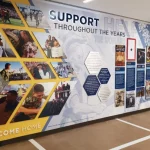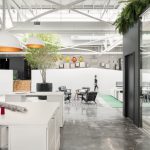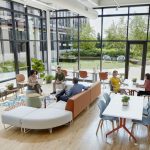Author Archives: vlm
Are Social Spaces Still Important Post COVID?
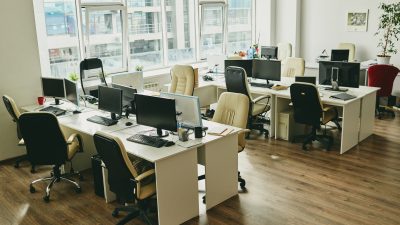
You may have asked yourself-are social spaces still important post COVID? It’s a fascinating question that the past 12 months have fostered, and Bellia has the answers. Some call it cautious, and some call it paranoia- either way, the awareness of the pandemic along with its effects on how we interact has shifted our communities to unprecedented forms of connecting. From live chat meetings to constant emails, many businesses are seeing themselves create a new way for their employees and customers to converse- but does that mean it’s the only way?
Why Social Spaces Still Important Post COVID
Lauren Rottet is an internationally celebrated architect/designer, who believes despite the changes, we need to remain socially connected. She spoke with Haworth’s Global Brand Director Kurt Vander Schuur and shared her thoughts on hospitality and social spaces. In fact, she feels social spaces are more important than ever as we return to the workplace. These spaces will have different looks and promote a new vibe, but the purpose will remain the same: supporting people in focus and collaborative work, as well as restorative activities.
“Work is coming to the hotels, and hospitality is coming to the office.”-that’s the opening sentiment she had to offer in her talk with Schuur, highlighting how the workspace has become contingent on locations available and if the location available is a set facility, these places must have a sense of geniality.
She also believes that it’s not so much we change the way we live, but we change the way we work entirely. Whether we think of it or not, a lot of our lives are based around our jobs, and sometimes our work comes home with us. This makes having a smaller workspace in your home and one at your office ineffective since you could simply work at home. Instead, she feels the office has become more than a place to do your part- it’s about communicating with others in a tactile, visceral way: to be social. People want to feel good about coming to the office since they do not have to. So why do they? They come because it’s a better environment.
With Bellia, businesses can help promote a better environment through design, furniture, and dressings to make the workplace more appealing. Please contact us here to learn how to bring your workplace a place you want to go.
2021 Office Design Trends
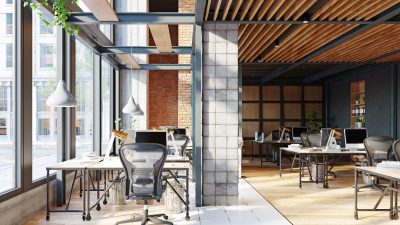
It’s no secret 2020 will be known as a year of turbulent times and hectic events. As we do our best to move past the negative, we cannot ignore the effects it’s had on our personal and professional lives. Of those effects are the 2021 office design trends. The past is behind us, but we must ask- how has it changed our future? What are the new needs and routines that will come together to influence design, form, and function?
With so many of us having related experiences, it’s no surprise that our commonalities will manifest in the workplace in how we shape the spaces we perform in. The demographics are shifting, and organizations’ culture is becoming more human-centric that keeps people comfortable, engaged, and inspired while embodying the personality of a company’s brand and culture.
2021 Office Design Trends
1. Raw Earth
Using raw earth materials introduces the outside to the inside. Due to the unbalanced, insecure, and vulnerable feelings we may have from not having control over the situation.
2. Imaginovation
As rough as its been, the past year has offered us an opportunity to think deeper and play harder, focusing on things we might otherwise have not thought of as important. Being forced to adjust suddenly and all at once, allows new forms of creativity to converge, for an opportunity to accelerate how and why we use technology, and the ability to make space for explosive innovative concepts and ideas.
3. Yesteryears
We live in the age of experience; different designers have different experiences. Those experiences lead to varying reflections, and so design becomes a mixture of styles that personalities from every era and background can relate to.
4. Geometrical
While recreation may have been hard to navigate, it’s been a great time for organization. With new designs that strip away the accents and stick to basic colors, lines, shapes, and geometric patterns, businesses can foster the feeling of structure and cleanliness.
5. Escapism
The distance we’ve had to endure has made us feel trapped, locked, and stuck in the same location. The work space now will be utilized as a place of productivity as well as an escape from what has become too familiar.
You can learn more about office trends in 2021 that will soon be the new norm across companies here.
To see how the team at Bellia can help, contact us using the form below.
Designing Workspaces for Generation Z

The experts at Bellia are leading the charge on designing workspaces for Generation Z. If change is inevitable, then preparation is essential. Instead of fighting against changing times and seeking a staff that will fit a mold of your model, an upgrade to your workspace could be beneficial to productivity in the long run.
Organizations need to think carefully about the best ways to reach Gen Z, and empower their growth for long-term gains. The ongoing pandemic has created a new set of problems regarding assurance, trust, and establishing good faith. Organizations can successfully gain the trust of Gen Z by recognizing the problems young adults and teens face as a result of the pandemic and adapting to their needs.
In our studies, we’ve seen that members of Gen Z value being measured mainly by their work quality, rather than by who they are personally in the workplace. Gen Z prefers the work/life balance offered by more flexible work arrangements and schedules. Highly proficient at using digital communication tools and managing their work online, Gen Z is the first generation to benefit directly from growing up in a world with an online communication and connection option. With that thought in mind, we urge businesses to acknowledge a sense of trust in them as employees who can work effectively and efficiently without being present in the workplace.
The biggest challenge brought up by Gen Zers was the inability to build deep relationships with coworkers that enable better collaboration and improved communication. Working only remotely severely limits one’s ability to fully grasp the nuances of a conversation which can hinder cooperation and collaboration. Gen Zers onboarding remotely don’t have the same opportunities for quality interpersonal communication with coworkers as those who have spent face to face, in both productive and casual conversations. This is where an organized and incentivized social time can boost morale and close the gaps on lack of camaraderie.
Learn more about designing workspaces for Generation Z by clicking this article here.
Designing Workspaces that Empower Employees

Bellia continues to be a leader in designing workspaces that empower employees. For almost 50 years, it’s been our mission to deliver workspaces that you and your staff will be proud of, and that will increase workplace satisfaction, productivity, and ultimately your success. We pride ourselves in being “design geeks”, and will take your vision to the next level. Working with Bellia means meeting a team that is concerned with your functionality, productivity, and satisfaction. We manage each project right down to the nitty-gritty details, leaving you with nothing to worry about.
Why Design Workspaces that Empower Employees?
68% of leaders believe that they create environments where employees can be themselves, raise concerns, and innovate without fear of failure. However, when asked if they have the same sentiment, just 36% of employees agree. Using three key elements, companies can foster a better response, improved conditions, and increased productivity that bolster the value of the staff on hand.
Diversity in Leadership
A mixed bag pleases the masses, and the same goes for the workplace. For example, Microsoft has seen a rise of 56% in women executives, and the number of women executives in technical positions has doubled since 2016. After this growth, the company saw creative solutions in gaming consoles and video chat applications that made it easier for those with handicaps.
Comprehensive Action
Leadership sets, shares, and measures equity targets openly. Sodexo has a goal of having 40% of its top leadership positions occupied by women by 2025. To achieve this, they created the “SoTogether” Gender Advisory Board which drives the company’s gender equality strategy (one of their top five global priorities, which also include disabilities, sexual orientation and gender identity, cultures and origins, and generations) and provides development opportunities to increase the women’s leadership pipeline through mentoring, sponsorship, HR processes, internal programs, and active advocacy.
Create An Empowering Environment
In a 2019 equality report, the customer relationship management company Salesforce set a new goal of 50% of their workforce to be made up of Underrepresented Groups (Women, Black, Latinx, Indigenous, Multiracial, LGBTQ+, People with Disabilities, and Veterans) by 2023. The report is highly transparent, laying out numbers as well as opportunities for improvement.
Learn more about cultural inclusion in the workplace and designing workspaces that empower employees by clicking this article here.
Designing Workspaces for Inclusion

For businesses thinking about designing workspaces for inclusion, Bellia is on the forefront for making the transition seamless. With workplaces being redesigned and re-imagined, Bellia continues to incorporate your corporate goals into a workplace design that will best suit your company.
You may not realize it, but workspace design can speak as its own language, conveying information about culture, norms, and commitment to well-being. Some people understand the language and make their way around the space without much difficulty or stress. These employees can locate other people and the resources they need to work effectively. This is called the “legibility” of the workspace. Legible spaces include a floorplan that can be easily navigated and understood by all. When a space is “illegible”, the space can unintentionally reduce inclusion and equity for some groups. Illegible space sends a subtle message that says, “You can use this space, but it really isn’t for you”, which can lead to potentially damaging higher stress levels for some groups.
Tips to Designing Workspaces for Inclusion
No work area can be completely perfect, but it’s important to consider as many needs as possible with a collaborative design process that brings employees in as consultants on making a good space great.
Using universal or inclusive design concepts can help everyone contribute fully and thrive. Some of these include:
- Providing choice in spaces and tools
- Eliminating unnecessary complexity and manipulation of items in the workspace
- Arranging tools, reference materials, and information based on importance
- Using pictorial, verbal, or tactile presentation of essential information
- Providing a variety of techniques or devices used by people with sensory limitations
- Arranging elements to eliminate physical hazards and barriers
- Providing warnings of potential hazards and failsafe features
- Ensuring tools can be used efficiently and comfortably with minimum repetitive actions and physical effort
- Providing a clear line of sight to important elements and keeping tools within reach of any seated or standing user
- Providing adequate space for assistive devices or personal assistance
It’s important to maintain the same sense of cultural inclusiveness and personal worth people would get from remote workers’ office environment. Some things that can help people feel like they belong while working remotely include:
• Ensuring everyone has the technology they need to collaborate and keep in touch
• Subsidizing home office furniture
• Setting norms among colleagues to have regularly occurring virtual touch-base meetings or check-ins
• Scheduling time for casual conversation and catching up
To learn more about the benefits of designing workspaces for inclusion, click here.
Returning to Work After the Pandemic
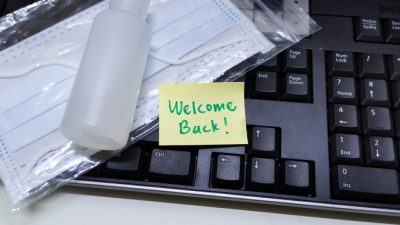
Businesses are doing their best to stay prepared as they plan for employees returning to work after the pandemic. Part of that preparation involves creating a space for employees that makes them feel comfortable while still productive. At Bellia we are used to being a reliable helping hand for businesses that aims to build a better work environment. With new studies and data from HAWORTH, we’ve been able to combine the safety measures needed with desired productivity for an optimum workspace design.
For almost 50 years, it’s been our mission to deliver workspaces that you and your staff will be proud of, and that will increase workplace satisfaction, productivity, and ultimately your success. Our focus has always been on functionality, productivity, and team satisfaction. As we all adjustment to the ongoing circumstances, our friends at Haworth have been able to identify three critical areas of focus to help navigate the return to the workplace in a COVID-19 environment:
(1) Employee Well-Being
Supporting people’s physical and psychological health to build confidence and enhance performance.
(2) Organizational Culture
Understanding and preserving your culture to empower your workforce and leverage your space in new ways.
(3) Transforming the Floorplate
Addressing facility requirements, density, and exposure while mitigating risk.
Bellia creates organic spaces that help you balance the needs of your people and space as we navigate returning to the workplace. Part of that organic blueprint is creating a solution that ensures people perform their best, supports your culture, and leverages existing products, enabling you to reconfigure with ease and reduced cost.
There’s a balance to remote work for safety purposes and in-person congregations. Living in the digital age has allowed many organizations to embrace remote work and the alternate ways of meeting that pandemic forced upon all of us. At Bellia, we believe remote work guidelines should balance personal interaction and collaboration—both virtually and physically.
Through all these changes, we want to keep the different culture variables of your workplace intact: Collaborate, Create, Control, and Compete. Returning to work in the new normal will involve careful consideration for each of these for C’s.
Collaborative culture involves a collective understanding that the changes will not be easy, but the transition is for the best. Creating this culture involves doing new things like embracing alternative ways to get work done.
Control culture involves doing things right, with a sense of security, and creating a system that seamlessly bridges different work settings.
Compete culture will have everyone doing the new things now, adjusting to the new standards with those struggling to identify where they lack and adapting to change.
To learn more about how our collaboration with Haworth is helping businesses adjust as they plan returning to work after the pandemic, download our free guide.
Factors That Kill Employee Focus

Working with HAWORTH, you can learn about the factors that kill employee focus and prepare to plan against them. As leaders in the office design and furniture industry, we stay on top of trends and are aware of the latest innovations. While we are sourcing products for your space, we are not just taking into account the overall design and aesthetics, but also the needs of the client and how the pieces we choose will help them achieve their business goals.
Your work environment could suffer from the question of “why can’t we focus at work”. It can be a difficult hurdle to clear. Knowing the ways that focus work is task- and person-specific can help you create a workplace—its culture, policies, and various workspaces—to meet all the ways employees need to work, including focus work.
The experts at HAWORTH, tested how visual and auditory distractions and interference affected tasks requiring sustained attention. They found when people were exposed to visual and auditory distractions or interference, their work performance declined.
The three culprits of work focus are:
Distractions- When unexpected off-task information captures our attention.
Interference- When off-task information gets confused with task information.
Disruptions- When a distraction or interference pulls us off a task entirely to start a new task.
Solutions Against Factors That Kill Employee Focus
- Work on a single task until completion
- Walls work best for more deliberate tasks. Next best is a panel at least 50” high for seated positions. For more automated tasks, adjusting your orientation to face a direction that minimizes visual activity is helpful.
- Ensure spaces have adequate signal-to-noise ratio through appropriate background sound levels.
Contact us today to learn more about improving work focus for your employees. A happy space makes for a happy place.
Create a Workspace to Help Employees Thrive in a Time of Coronavirus

Employers worldwide are faced with protecting their employees’ health in the face of the COVID-19 pandemic. As we implement solutions like staggered schedules, remote working, and redesigning floor plates to put more space between people, there’s an important question to ask: Are we adapting to simply survive or are we adapting to thrive?
To learn how to acclimate to the new normal go to Haworth.com.
Workplace Culture in a Time of Coronavirus

People are slowly returning to the workplace since the COVID-19 pandemic set in, but with that comes many changes within the workspace. One thing that employers can preserve is the culture within the space. Not only can they protect it, they need to nurture it. What we’ve discovered is that the “new normal” in the workplace depends on an organization’s culture.
Read more about that at Haworth.com.
Return to the Workplace
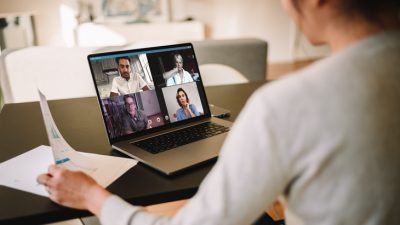
The global pandemic has impacted many businesses leaving employers faced with many questions and decisions like:
What will the return to the workplace look like?
What short and long-term workplace changes will need to be implemented before employees return to the office?
What will be the new “normal”?
While we don’t have all of the answers, the team at Haworth has been developing solutions to answer some of those questions. Read more about it here.




